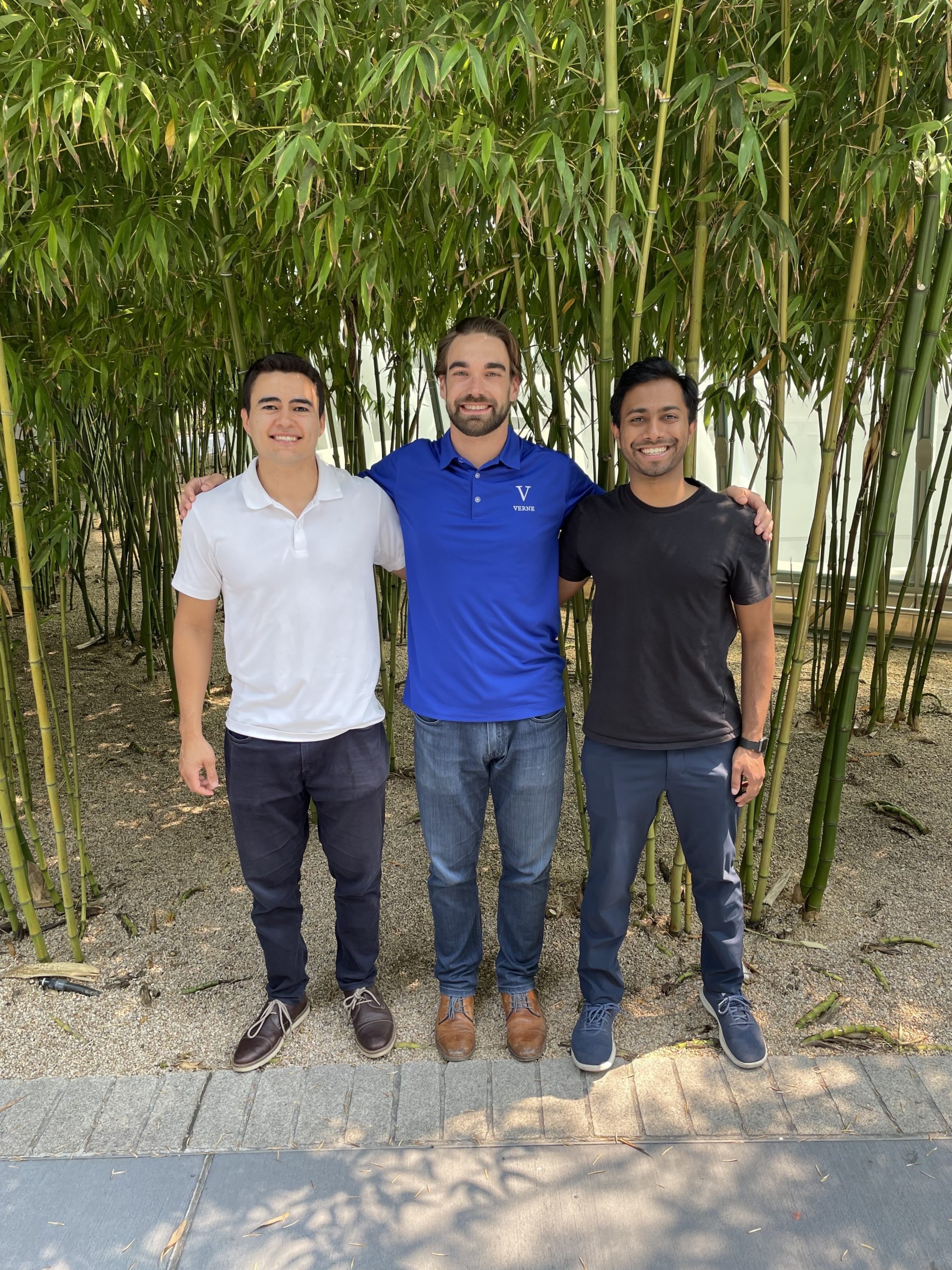Bav Roy MBA ’21 was named in the 2022 Forbes 30 Under 30 List for his work as a co-founder and Chief Operating Officer of Verne, a deep-tech start-up that develops high-density hydrogen to accelerate the decarbonization of heavy duty transport. Roy co-founded the start-up alongside Chief Executive Officer Ted McKlveen MBA ’21 and Chief Technology Officer (CTO) David Jaramillo, who were also named in the list.
The Stanford Daily [TSD]: How did the Verne team come together?
Bav Roy [BR]: Ted McKlveen and I both began our MBA programs at Stanford in the summer of 2019. We both went to the Energy@Stanford & SLAC conference at Stanford, right before our programs. There, we attended a seminar on the hydrogen economy. And that’s where we really learned about the potential for green hydrogen to be used as a vehicle for decarbonization in various hard-to-decarbonize sectors of the economy.
[The conference] piqued [Ted’s] interest. And so he did a bit more research afterward, got in contact with me and found that there’s a lot of work going into bringing down the cost of hydrogen and green hydrogen production. There was a lot of work going into how we use hydrogen, but there were still not enough efforts going into improving storage. It remains a challenge that isn’t getting enough attention.
Then, he contacted his friend from undergrad, David Jaramillo, who’s our CTO now. David happened to be doing his Ph.D. in Hydrogen Storage at UC Berkeley. And so, through that, David and Ted did more research on the potential to commercialize the technology that David was developing at UC Berkeley.
And so at that point, Ted brought me in because we had a shared mission to accelerate decarbonization efforts through early-stage entrepreneurship.
TSD: What did you discover from the Stanford Climate Ventures course?
BR: Through the course, we did a lot of customer discovery and a lot of techno-economic analyses. We actually found that the technology wasn’t right. Through the process, we uncovered another technology, cryo compression, which is storing hydrogen in a supercritical state. This state is sort of the thermodynamic sweet spot where you get high-density hydrogen without as much of an energetic penalty of getting to that stage.
TSD: Electric vehicles seem to receive a lot more support than hydrogen fuels. What are your thoughts on this?
BR: Battery technology is often the first thing that’s thought about when people talk about decarbonizing heavy-duty transport. And to be clear, there will be a role for batteries in heavy-duty. Batteries are a very proficient way to store energy. But then also, let’s be clear about the limitations of battery technology. Whether it’s a car, a truck, a ship or a plane, when we need to move a big vehicle over a long distance, the amount of energy required scales considerably. When you think about trying to store that much energy in a battery, your battery pack scales up dramatically.
There’s a certain point where the cost of weight of the battery pack is just prohibitive to the actual operation of the vehicle. In contrast, hydrogen performs really well at scale. It makes less sense for the light-duty segment, but for heavier-duty long-distance vehicles, it scales much better. Hydrogen is the lightest element. It is orders of magnitude lighter than the battery technology.
The fueling cycle for hydrogen fuels is also much quicker. In one electricity charger, you might be able to charge a few vehicles per day. But with a hydrogen fueling station, you can refuel anywhere between tens, hundreds, thousands of vehicles per day, which allows you to amortize the infrastructure costs over many more vehicles.
TSD: How do you feel about being named in the Forbes 30 Under 30 List?
BR: It was certainly a pleasant surprise to be recognized for the work that we are doing. I would like to stress that whilst the three of us founders have been recognized by Forbes, there are other team members, advisors and investors that have also played an important role in our early success today. We’ve got a long road to go to achieve our climate change goals but we hope that the announcement and the publicity that comes with it helps us get our message out there about what we’re doing and accelerates our progress in actually realizing a zero-emission future.
TSD: What is Verne’s forward trajectory?
BR: Verne aims to be the go-to provider of safe, high-density hydrogen solutions for heavy-duty transport. As the hydrogen vehicles really start to ramp up in their production in about three to five years, that’s when we’ll bring the learnings from our early deployments as well as the innovations from an R&D program; they’ll come together to our first mass-manufactured system.
TSD: In your opinion, what climate problems do not receive enough attention right now? Do you have any advice for current Stanford students working in climate tech?
BR: I’d like to think about the climate problem in terms of the sort of Breakthrough Energy, decarbonization framework, where they break down the emissions from the global economy into five main buckets: electricity, transportation, manufacturing, buildings and agriculture.
Electricity has received by far the most attention — it’s great. It’s how we got some early wins with solar and wind. Now, transportation and agriculture are getting a lot of focus, I think, like Tesla and Beyond Meat. And so it’s great, there are great advancements to EVs and alternative meat.
However, both manufacturing and buildings together represent about 38% of the emissions problem. And I think [manufacturing and buildings] have the least clear paths to an emissions-free future.
If I were back at Stanford, I would look for either technical or business model innovations that would decarbonize part of the global manufacturing and building industries.
The following transcript has been lightly edited for clarity and length.
